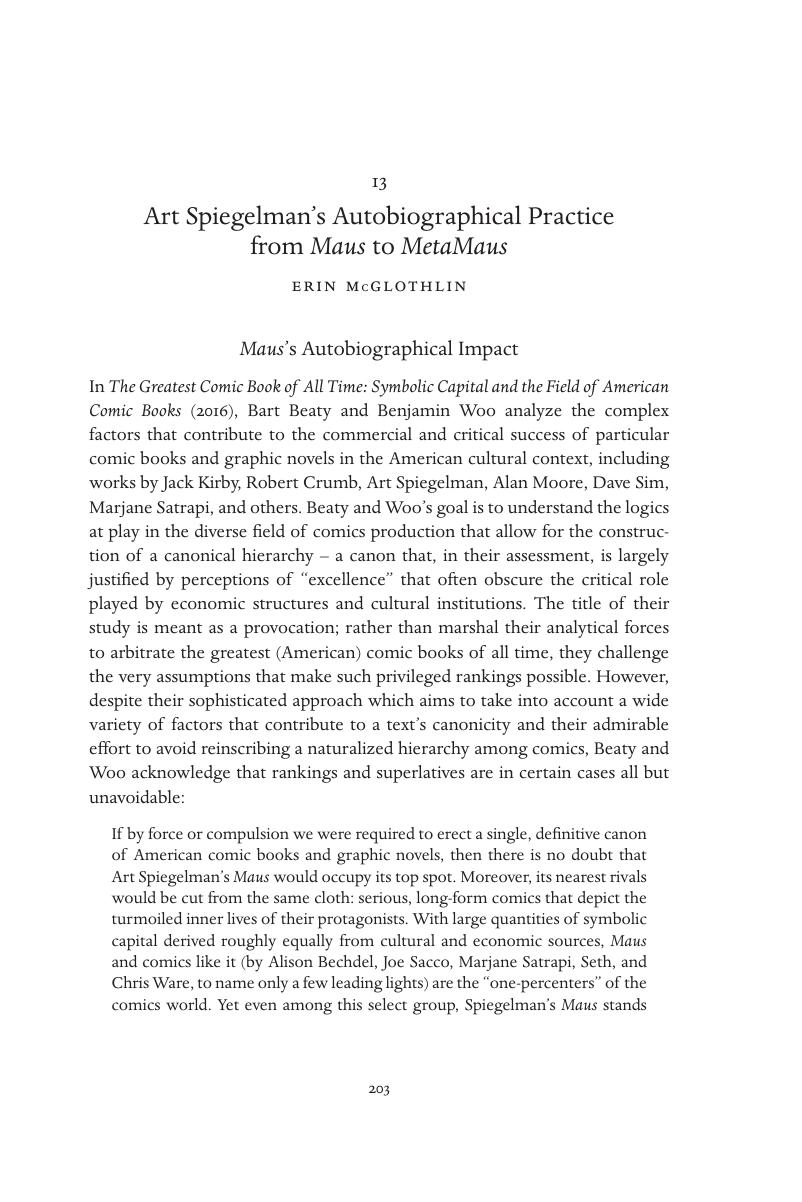Book contents
- The Cambridge History of the Graphic Novel
- The Cambridge History of the Graphic Novel
- Copyright page
- Contents
- Illustrations
- Contributors
- 1 Introduction
- Part I 1799–1978
- Part II 1978–2000
- 12 Will Eisner and the Making of A Contract with God
- 13 Art Spiegelman’s Autobiographical Practice from Maus to MetaMaus
- 14 Alan Moore: The Making of a Graphic Novelist
- 15 No Future: Punk and the Underground Graphic Novel
- 16 European Literary and Genre Fiction: The (À Suivre) Magazine and the “Adventure” and “Science Fiction” Traditions (Pratt, Tardi, Moebius)
- 17 “A Word to You Feminist Women”: The Parallel Legacies of Feminism and Underground Comics
- 18 The Secret Origins of LBGTQ Graphic Novels
- 19 US Creators of Color and the Postunderground Graphic Narrative Renaissance
- 20 The Influence of Manga on the Graphic Novel
- 21 Sandman, the Ephemeral, and the Permanent
- 22 “To Elevate Every Experience into Something Artistic and Exciting”: Daniel Clowes’ Ghost World
- 23 From an Informed Fan Culture to an Academic Field
- Part III 2000 to the present day
- Bibliography
- Index
- References
13 - Art Spiegelman’s Autobiographical Practice from Maus to MetaMaus
from Part II - 1978–2000
Published online by Cambridge University Press: 30 July 2018
- The Cambridge History of the Graphic Novel
- The Cambridge History of the Graphic Novel
- Copyright page
- Contents
- Illustrations
- Contributors
- 1 Introduction
- Part I 1799–1978
- Part II 1978–2000
- 12 Will Eisner and the Making of A Contract with God
- 13 Art Spiegelman’s Autobiographical Practice from Maus to MetaMaus
- 14 Alan Moore: The Making of a Graphic Novelist
- 15 No Future: Punk and the Underground Graphic Novel
- 16 European Literary and Genre Fiction: The (À Suivre) Magazine and the “Adventure” and “Science Fiction” Traditions (Pratt, Tardi, Moebius)
- 17 “A Word to You Feminist Women”: The Parallel Legacies of Feminism and Underground Comics
- 18 The Secret Origins of LBGTQ Graphic Novels
- 19 US Creators of Color and the Postunderground Graphic Narrative Renaissance
- 20 The Influence of Manga on the Graphic Novel
- 21 Sandman, the Ephemeral, and the Permanent
- 22 “To Elevate Every Experience into Something Artistic and Exciting”: Daniel Clowes’ Ghost World
- 23 From an Informed Fan Culture to an Academic Field
- Part III 2000 to the present day
- Bibliography
- Index
- References
Summary

- Type
- Chapter
- Information
- The Cambridge History of the Graphic Novel , pp. 203 - 218Publisher: Cambridge University PressPrint publication year: 2018



